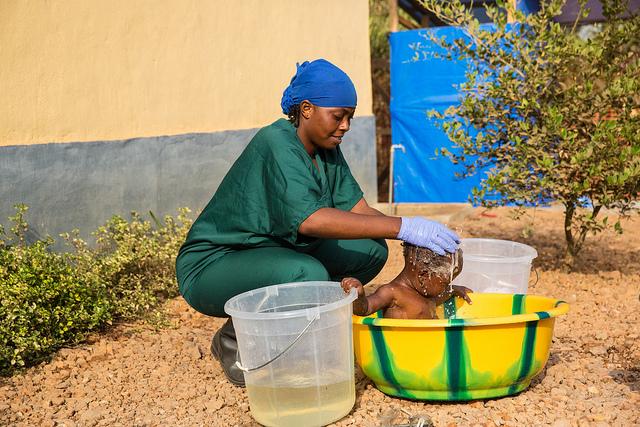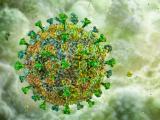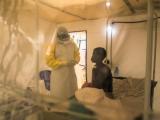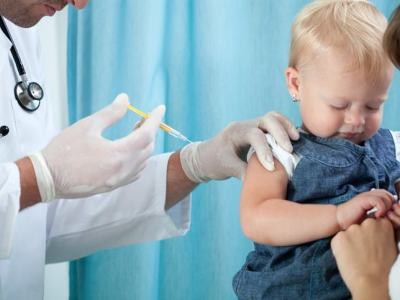Though Ebola cases in West Africa's outbreak region continue to drop sharply, infections are still occurring in some hot spots and posing a threat to other countries, with the World Health Organization (WHO) announcing today that the situation is still a public health emergency of international concern (PHEIC).
In its weekly detailed overview of the outbreak, the WHO said Guinea, Liberia, and Sierra Leone reported only 145 confirmed cases over the past week, lifting the global outbreak total to 21,724 cases. For comparison, in the week before, the three countries reported 234 cases.
Officials eye remaining hot spots
Though the number of cases fell in Sierra Leone, the country still reported the bulk of the region's cases last week, with 117 infections, compared with 20 in Guinea and 8 in Liberia. Overall, the country is still the hardest hit of the three, reporting 10,340 illnesses.
Liberia is still tallies the most deaths, which have reached 3,605. Overall, 212 deaths were reported in the three countries last week, boosting the cumulative total to 8,626. The WHO said the case-fatality rate in hospitalized patients is 57% to 59% in the three countries, a level that hasn't improved since the outbreak began.
In Guinea, cases declined for the third week in a row to their lowest levels since early August, the WHO said. The worst affected district was Dubreka, located just north of the capital, which reported five infections, with Conakry and Boffa each reporting four cases.
Most of Liberia's cases—6 confirmed and 11 probable—were reported from Montserrado County. The other area that reported cases last week was Grand Cape Mount district, a recent hot spot, which reported 2 new infections.
Western Sierra Leone is still seeing the most intense disease transmission, with 30 newly confirmed cases in the capital, Freetown, and its neighboring districts of Port Loko and Western Rural reporting 31 and 17 cases, respectively. Two areas of Sierra Leone that border Guinea reported new cases: Kambia district in the west and Kono district in the east.
Among health workers in the outbreak region, 3 more infections and 6 more deaths were reported, raising the totals for that group to 828 illnesses and 499 deaths.
Response activities
In its assessment of response activities, the WHO said all three countries have the capacity to isolate and treat all patients, with two treatment beds for each confirmed, probable, or suspected case. It added that the numbers of new beds planned for each country will be scaled back, in line with falling case numbers.
For contact tracing, a key tool for driving down the number of cases, the WHO estimates that 89% to 99% of registered contacts are monitored daily, though the number of contacts followed per case is lower than expected in many districts, it said.
The agency added that, in the first part of January, 53% of cases in Guinea and Liberia were in known contacts. The data were not available for Sierra Leone.
Emergency committee deliberations
In its fourth meeting yesterday, the WHO's Ebola emergency committee recommended unanimously to continue the PHEIC that was first declared on Aug 8, the WHO said today in a statement. Extensions last 3 months or as developments warrant.
To reach its decision, the group reviewed the latest epidemiologic information, noting that cases have decreased in all three of the hardest-hit countries. The team reviewed progress on response actions and heard from representatives from affected countries.
Since its last meeting on Oct 23, Spain, the United States, and Mali have declared the end of Ebola transmission. In addition, one infection was imported into the United Kingdom, in a health worker who got sick after she arrived back from Sierra Leone.
The committee also urged the WHO to keep its earlier temporary recommendations in effect, emphasizing the importance of exit screening for Guinea, Liberia, and Sierra Leone, and active surveillance and cross-border cooperation for countries that share borders with the outbreak countries.
Members also reasserted that other countries should avoid unneeded interference with international trade and travel. They added that more than 40 countries have implemented additional restrictions, such as quarantines for returning travelers and entry refusal.
They concluded that the primary goal should be getting to zero cases in the most affected countries and that complacency poses the biggest risk to not reaching that goal.
Study: mutations could affect drug mechanisms
A genetic comparison of the Ebola virus causing West Africa's outbreak and the ones that sparked outbreaks in Zaire (now the Democratic Republic of Congo) in 1976 and 1995 revealed hundreds of mutations, some of which could impede treatments that are in development, such as ZMapp, a research team reported yesterday.
The team based at the US Army Medical Research Institute of Infectious Diseases (USAMRIID) published its finding in the most recent issue of mBio. The group includes researchers from Harvard University and the Massachusetts Institutes of Technology (MIT).
Initial comparisons found more than 600 genetic mutations. When researchers focused on mutations in genetic sequences targeted by certain experimental drugs, they found 10 mutations that might interfere with the drugs' mechanisms of action. Among the 10 mutations, three surfaced recently during West Africa's outbreak.
The findings suggest the mutations could interfere with the mechanisms of sequence-based drugs under development that have been tested against the two earlier strains. These drug candidates include monoclonal antibodies, small-interfering RNAs (siRNA), and phosphorodiamidate morpholino oligomers (PMO). For example, ZMapp is a mixture of three monoclonal antibodies that targets parts of the Ebola Zaire virus.
So far none of the drugs have been approved by the US Food and Drug Administration (FDA), but some are being used to treat a small number of patients under a WHO protocol.
The authors urged drug development groups to consider genetic drift when developing possible therapies against Ebola.
They note, however, that some of the drugs have been designed to tolerate possible mutations. For example, siRNAs and PMOs target higher conserved areas where mutations are thought to be unlikely, and a monoclonal antibody cocktail such as ZMapp has a multitarget strategy that may blunt the impact of individual mutations of an evolving Ebola variant.
Other developments
- At a briefing today at the World Economic Forum in Davos, Switzerland, David Nabarro, MD, the United Nations (UN) special envoy on Ebola, said $1 billion more is needed to battle the outbreak in West Africa, Bloomberg News reported today. He said the UN is seeing more money from donors to fund outbreak activities conducted by the WHO, the UN Children's Fund (UNICEF), and the World Food Program.
- The United States will probably reduce the number of troops deployed in West Africa, because major tasks, such as building treatment units, have been completed and Ebola infections continue to slow, Andrew Weber, deputy coordinator the US Ebola response with the State Department, said yesterday in a conference call with journalists, according to a Bloomberg News report yesterday.
See also:
Jan 21 WHO Ebola situation report
Jan 21 WHO statement on PHEIC
Jan 20 mBio study
Jan 20 USAMRIID press release
Jan 21 Bloomberg News story on Ebola comments from the World Economic Forum
Jan 20 Bloomberg News story on Ebola region troop red



















